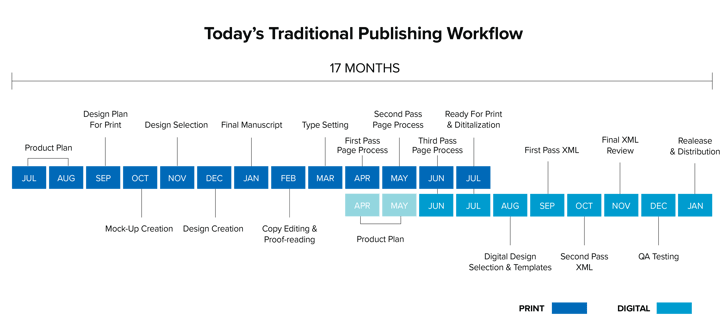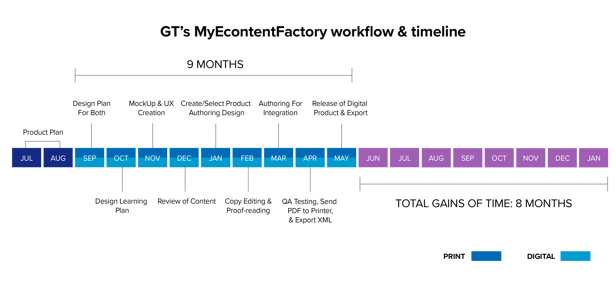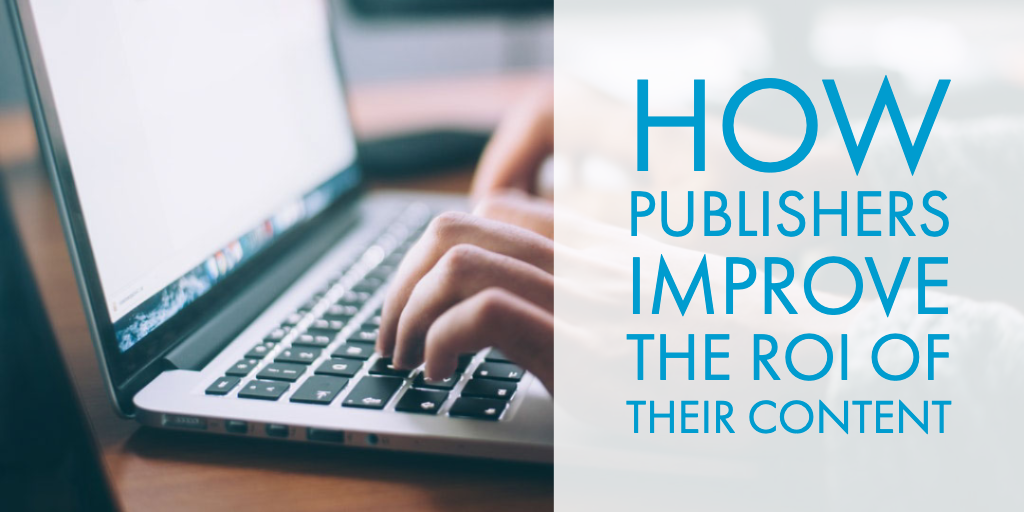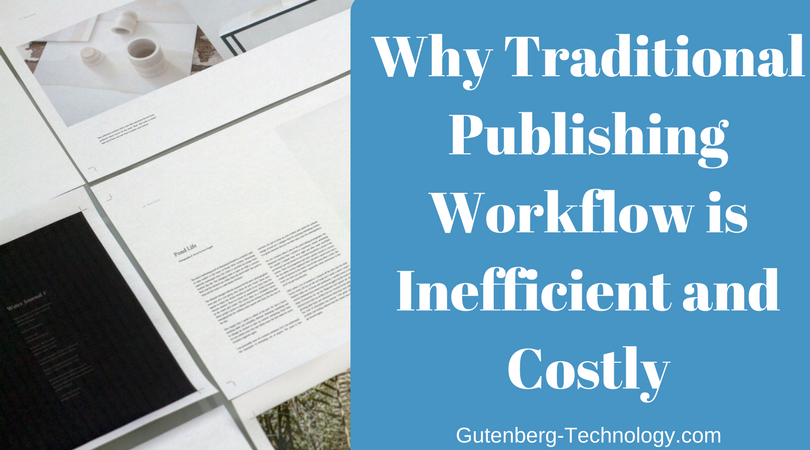Gutenberg Technology (GT) has developed cutting-edge technology that makes learning more accessible and appealing, at the same time radically improving the return on investment (ROI) for educational publishers.
Aimed at digital content providers, GT’s MyEcontentFactory (MEF) is a ground-breaking software as a service (SaaS), cloud computing platform that enables publishing teams to author, design, edit, and collaborate on digital learning materials in real-time. A powerful content management system for text, images, and multimedia elements, it also provides textbook developers with all the tools they need to generate engaging content for the broad spectrum of learners.
Additionally, MEF is the ideal solution for streamlining concurrent print and digital projects so that you have a simultaneous workflow. It also allows publishers to broadcast educational content to multiple platforms including for web, apps, learning management systems, and the full range of mobile devices including tablets and smartphones.
With our mission to “push the boundaries of technology so you can push the boundaries of knowledge,” GT’s MEF dramatically adapts the traditional print-based publishing processes to digital-first, service-orientated models. By enabling a simultaneous workflow, MEF significantly reduces time and money spent, creating a substantial ROI for publishers and C-level executives in the publishing industry.
How GT’s MEF Increases the Bottom Line for Publishers
Typically, the design and production process for any print and digital product is likely to take up to 17 months to complete. This is because:
- Publishers tend to follow print-first processes
- Print and digital products are not produced simultaneously
But with GT’s MEF, the traditional publishing workflow is transformed to an automated digital-first workflow that takes just nine months to complete. The two timelines illustrated below show how this achieved. The traditional combined print and digital workflow, excluding the product plan, takes 17 months:

GT’s integrated print and digital MEF workflow, excluding the product plan, takes just 9 months:

A comparative analysis of the two workflows in a GT case study shows the efficacy of the latter. On average, enabling an integrated end-to-end print and digital workflow using MEF will save an estimated 47 percent of time and around 30 percent of costs.
A sample print and digital workflow cost sheet lists all the anticipated costs for every step of the production process, from content review to digital product creation, excluding printing, marketing, and royalties. It also shows the percentage each task represents in terms of the project, displays the estimated gain per task using the simultaneous workflow, and shows the savings per task achieved by using MEF.
The most significant savings per task ranges from 30 to 100 percent. For example, there is a 100 percent savings for text file conversions, which make up 0.46 percent of the project, and the dollar value savings are shown as $4,153.08. There is a potential 50 percent savings for digital product creation, which carries a task cost of $159,843.33 and represents 17.76 percent of the project process. Actual savings are shown as $79,921.66. A 50 percent savings can also be achieved for composition in the content design process.
A 30 percent savings can be realized for accuracy and fact-checking, editorial management, print production PMO, content review, copyediting, indexing, proofreading, and product functional QA. Dollar-wise, print production PMO carries the highest savings at $98,166.82. At 36.36 percent, this task also represents the highest percentage for any task in the project.
There are a few tasks that don’t automatically benefit from using MEF, mostly those that relate to art creation, images (including conversion), photo creation, and permissions for art, photographs, and other media. Research required for art, photos, and other visuals, as well research and clearance for text also have a zero savings rate.
As a whole, the sample workflow shows how $266,078.19 can be saved on a $900,000.000 print and digital publishing project, providing massive savings and substantial ROI for any publishing company.
Of course, it stands to reason that potential savings of any kind will likely be based on the type of publishing business, as well as the type of product being published. It will also depend on the number of products included and whether the publication is a new edition or reprint. So, for instance, if a publisher has as many as 100 print and digital products, the estimated savings would rise to $26,600,000.00. Additional incremental savings would also apply to content reuse and several other “non-measurable optimizations.”
Download the case study to analyze your company’s potential savings in more detail and implement a strategy that will enable you to use the GT MEF to create your own impressive ROI.





.png)
Leave a comment